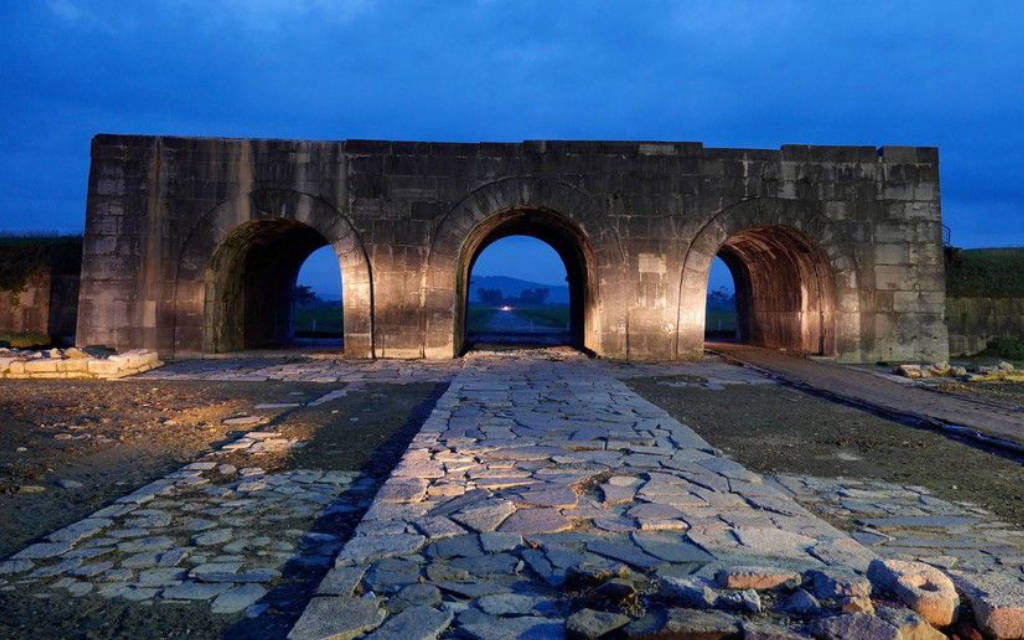The Ho Dynasty Citadel, located in modern Thanh Hoa province, was the capital of Vietnam from 1398 to 1407. It is one of the few remaining stone citadels in Southeast Asia. The Ho Dynasty Citadel has been recognized by UNESCO as a World Cultural Heritage for its cultural, historical values and unique construction techniques.
The Ho Dynasty Citadel was built by Ho Quy Ly in 1397, under the reign of King Tran Thuan Tong. Historically, the citadel was also known by other names such as An Ton, Tay Do, Tay Kinh, Tay Nhai, Tay Giai. The citadel was built under the direction of Ho Quy Ly when he was serving as prime minister under the Tran Dynasty.
After the citadel was completed, Ho Quy Ly forced King Tran Thuan Tong to move the capital from Thang Long (now Hanoi) to Thanh Hoa. In 1400, Ho Quy Ly ascended the throne to replace the Tran Dynasty, the Ho Dynasty Citadel officially became the capital, and Ho Quy Ly took the national name Dai Ngu, meaning happiness and joy. However, this dynasty lasted only 7 years, the shortest dynasty in Vietnamese history.
The Ho Dynasty Citadel fully meets the two cultural criteria set by UNESCO to rank the work as a Heritage. The second criterion “Represents important human values and their influence over a period of national history or in a region of the world, these contributions have a developmental nature in architecture, technology, sculpture, and urban planning”.
The fourth criterion “Becomes an outstanding example of a type of work, an architectural ensemble, engineering or landscape that illustrates the value of one (or more) periods in human history”.
This work is highly appreciated in terms of construction techniques of stone blocks that are considered unique in Vietnam in particular and the whole East Asia and Southeast Asia in general, around the end of the 14th century and the beginning of the 15th century. Researchers have assessed that the architecture of the Ho Dynasty Citadel was built very scientifically, with large stone slabs carved in a square shape, arranged interlaced in the shape of grapefruit segments to avoid large vibrations such as earthquakes.
Notably, there is no adhesive between these stone slabs, but the citadel has stood firm for more than 600 years, overcoming many impacts of earthquakes and destructive bombs. In addition, this massive, solid structure was only built within the first 3 months of 1397.
According to documents left behind and archaeological work and current research, the Ho Dynasty Citadel heritage complex includes the Inner Citadel, the Moat Citadel, the La Thanh Citadel and the Nam Giao Altar located outside the citadel. Of which, the Imperial Citadel is the most massive and most intact structure remaining to this day.
The entire outer wall of the citadel is a combination of four main gates made from green limestone slabs, meticulously carved, overlapping each other. These large stone blocks have slabs up to 6 meters long and weigh about 20 tons. Explaining how these giant stone blocks were transported, archaeologists believe that people used stone marbles to roll them.
These large stone blocks have slabs up to 6 meters long and weigh about 20 tons, tightly fitting together without any adhesive.
Previously, inside the citadel, there were many magnificent structures such as Hoang Nguyen Palace, Dien Tho Palace (Ho Quy Ly's residence), Dong Cung, Tay Thai Mieu, Dong Thai Mieu, ... not inferior to Thang Long citadel. However, over a period of more than 6 centuries with many subjective and objective impacts, most of these architectural structures were completely destroyed.
Previously, inside the citadel, there were many magnificent structures but they were destroyed.
One of the great mysteries related to the structure is the disappearance of the dragon head on the pair of meticulously carved dragons inside the citadel. This pair of stone dragon statues is considered by historians to be the largest and most beautiful remaining dragon statues in Vietnam. They have a body shape that gradually tapers towards the tail, with seven curves, covered with scales. This pair of dragons also has the unique artistic value of the Tran Dynasty when it was prosperous.
There are many hypotheses explaining why the dragon heads disappeared, but the hypothesis that after invading our country, the Ming army cut off the dragon heads and brought them back to report their achievements is accepted by many people.
Ho Dynasty Citadel is an important historical relic with high cultural and architectural value in ancient times. Coming to this relic, visitors have the opportunity to admire the uniqueness of the ancient construction and learn about this elaborate technique. This is a destination that is increasingly attracting many domestic and foreign tourists.
 Register
RegisterSign in Travel Agent
Sign in Supplier
Sign in Affiliate
Sign in Guru



 Thành Nhà Hồ Vĩnh Lộc, Huyện Vĩnh Lộc, Thanh Hóa, Việt Nam
Thành Nhà Hồ Vĩnh Lộc, Huyện Vĩnh Lộc, Thanh Hóa, Việt Nam